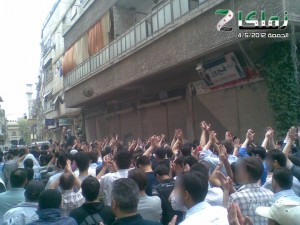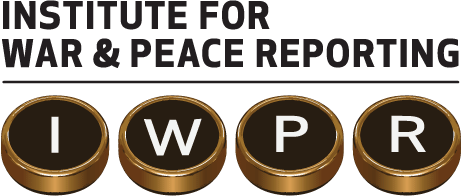Eerie Emptiness in Zamalka

Razan Zaitouneh
Salma comes home from the town of Zamalka every day feeling angry and gloomy.
The young woman was forced to leave with her family several months ago. These days, Salma visits the town together with some friends to assist with cleaning up the streets, and to help people get back on their feet – both those who never left and those who are just beginning to come back.
Zamalka is still without electricity and water. Salma has noticed foul smells around the town, and no one can say what is causing them. She still comes across human remains while cleaning the streets.
Some catastrophes go almost unnoticed. There are few places, websites for example, that mark the passing of those killed in Zamalka. There are not many people left to grieve for them, either.
For a few months last year, Zamalka was the scene of some of the attractive demonstrations in the eastern Ghouta area. They drew protesters from all over Damascus and surrounding countryside. Both Christmas and New Year were celebrated by activists from diverse faith groups. At Christmas, Santa Claus led the demonstrations.
All that seems very remote after what happened from late January onwards.
Government troops took control of Zamalka and sliced it into segments with checkpoints which they set up between neighbourhoods. Soldiers humiliated, arrested and even killed local residents. They took civilians hostage and demanded ransoms for their release.
“They were like a mob; like a cancer plaguing the streets,” one resident called Omar said.
The military took over the Zaino Wedding Hall, so that instead of ululating women parading in evening dresses, and men whispering about how beautiful the girls were, the screams of tortured detainees could be heard.
June 30 was a low point, when a car bomb exploded during a massively attended funeral and killed more than 100 people.
The resistance continued. Opposition fighters attacked a checkpoint in the town centre, and freed the people detained in the Zaino Wedding Hall.
Two days after that, security forces crossed the Zamalka Bridge to enter the town and rescue the soldiers manning the checkpoint, who were now under siege. Along the way, the troops looted and wrecked shops and houses.
A new checkpoint was set up at entrance to the town, while a military sniper targeted people from the minaret of Al-Adnan Mosque. Random shelling resumed, as did daily abuses and arrests.
The Free Syrian Army, FSA, decided to target checkpoints in the town again. As the operation got under way on the morning of July 30, cries of “Allahu Akbar” were heard from the mosques. The military retaliated with a round of shelling that left dozens of casualties.
“FSA vehicles kept going back and forth to pick up the bodies of martyrs,” Omar recalled. “We could hear the sound of shells as they were fired, and we’d then have only a few seconds to take cover before they landed. It was worse when a shell was fired from a closer location, because we would only hear it landing and the fragments flying, followed by the thump of our terrified hearts.
“Whenever there was a lull in the shelling, we’d whisper to each other, ‘It’s over, right?’ The moment we finished speaking, another artillery shell would land and prove us wrong. We had to queue up for the toilet again and again – we were so scared of being killed by a shell or slaughtered by shabbiha [regime militia].”
The regime forces targeted not just FSA positions, but the whole town – homes, infrastructure, markets and the civilian population. Houses were raided and people butchered in cold blood as a planned part of the military operation.
The devastation was beyond description. There were corpses scattered everywhere, and homes demolished after being looted.
The security forces manning the checkpoints had gone, but so had all signs of life.
“Zamalka was ‘freed’ from everything – the checkpoints but also its people. The regime’s army and the people were both defeated,” Omar said.
This state of affairs was not to last. Within a matter of weeks, government troops returned with reinforcements, and the town was occupied again.
Large numbers of young people are still missing after being rounded up and handcuffed on Zamalka’s main square. This was similar to what happened in the town of Al-Baida.
Since this reverse, there have been some voices accusing the FSA of being partly to blame for it. A Facebook posting by an activist from Zamalka questioned the value of destroying military checkpoints, given that as a result, the town was destroyed and its people forced to flee.
It has recently become common to blame FSA whenever a town is taken by government forces. The opposition force is accused of starting an unequal battle in a populated area without considering its limited ability to resist.
Others argue that there is no other option, that the revolution has been militarised, and that demonstrations are just as much a target for shelling as FSA forces are.
Can we really blame young men who are willing to sacrifice their lives to free their home territory, even though they realise how restricted their military capabilities are?
No one really knows what the right thing to do is, or what mistakes to avoid in the future.
One thing is for certain. Everyone, including the FSA’s critics, looks back with nostalgia on last year’s demonstrations in Zamalka. They are still waiting for this ghost town to be freed again, vibrant with the sense of liberty and love.
